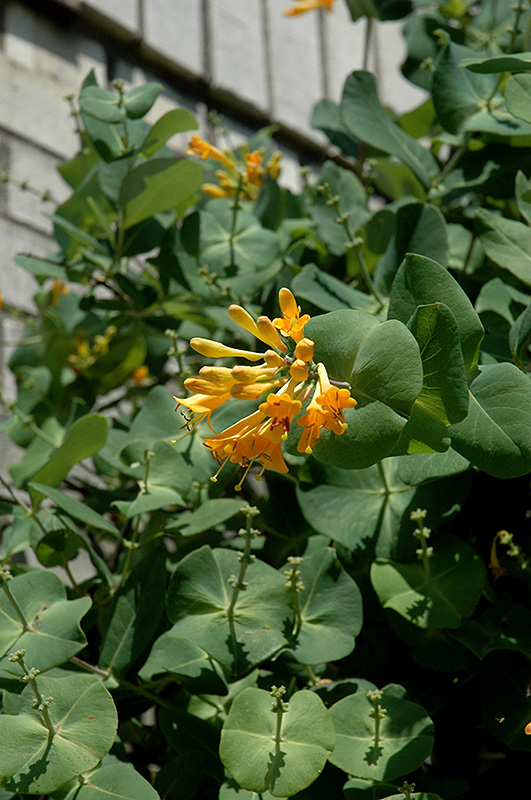Honeybelle™ Honeysuckle
Lonicera x brownii 'Bailelle'
Height: 20 feet
Spread: 24 inches
Sunlight:
![]()
Hardiness Zone: 3
Other Names: Brown's Honeysuckle
Brand: First Editions
Description:
Versatile and easy to grow, its first flush of flowers is like a waterfall of golden blossoms and the repeat is extraordinarily consistant; this compact twining vine will bloom well into the fall and produce showy red berries
Ornamental Features
Honeybelle™ Honeysuckle features showy clusters of gold trumpet-shaped flowers at the ends of the branches from late spring to late summer. It has green deciduous foliage. The oval leaves do not develop any appreciable fall colour. It produces red berries in early fall.
Landscape Attributes
Honeybelle™ Honeysuckle is a multi-stemmed deciduous woody vine with a twining and trailing habit of growth. Its relatively coarse texture can be used to stand it apart from other landscape plants with finer foliage.
This is a relatively low maintenance woody vine, and is best pruned in late winter once the threat of extreme cold has passed. It is a good choice for attracting butterflies and hummingbirds to your yard. It has no significant negative characteristics.
Honeybelle™ Honeysuckle is recommended for the following landscape applications;
- Hedges/Screening
- General Garden Use
Planting & Growing
Honeybelle™ Honeysuckle will grow to be about 20 feet tall at maturity, with a spread of 24 inches. As a climbing vine, it tends to be leggy near the base and should be underplanted with low-growing facer plants. It should be planted near a fence, trellis or other landscape structure where it can be trained to grow upwards on it, or allowed to trail off a retaining wall or slope. It grows at a medium rate, and under ideal conditions can be expected to live for approximately 20 years.
This woody vine should only be grown in full sunlight. It does best in average to evenly moist conditions, but will not tolerate standing water. It is not particular as to soil type or pH. It is highly tolerant of urban pollution and will even thrive in inner city environments. Consider applying a thick mulch around the root zone in winter to protect it in exposed locations or colder microclimates. This particular variety is an interspecific hybrid.







